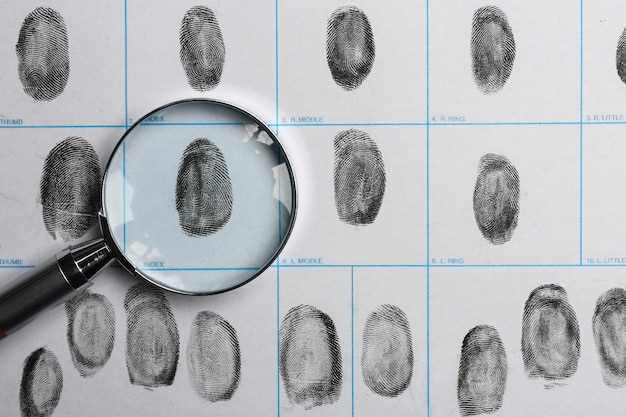
Looking for a reliable source of Lisinopril imprint images? Look no further!
At our online platform, we provide a comprehensive collection of high-quality Lisinopril imprint images. Our vast database is regularly updated to ensure that you have access to the most accurate and up-to-date information.
Why choose us?
1. Extensive Collection: Our collection includes a wide range of imprint images for Lisinopril, allowing you to easily identify different pill variations.
2. Accurate Information: We ensure that all the imprint images are sourced from reliable and trusted manufacturers, guaranteeing their accuracy.
3. Easy Search: Our user-friendly platform enables you to quickly search and find the specific Lisinopril imprint image you are looking for.
4. Reliable Source: We are committed to providing only verified and trustworthy information, helping you make informed decisions about your medication.
Don’t waste your time searching through unreliable sources. Visit our website now and find the Lisinopril imprint image you need with ease!
Understanding Lisinopril imprint codes
Lisinopril is a medication commonly used to treat high blood pressure and heart failure. It belongs to a class of drugs known as angiotensin-converting enzyme (ACE) inhibitors. Lisinopril works by relaxing blood vessels, which helps to lower blood pressure and improve blood flow.
Lisinopril tablets come in various strengths and forms. To identify the specific type of Lisinopril tablet, it is important to understand the imprint codes that are present on the tablets. Imprint codes are unique markings or numbers imprinted on the surface of a pill, which help to identify the manufacturer, strength, and other characteristics of the medication.
The imprint codes for Lisinopril tablets can vary depending on the manufacturer, but they typically consist of letters, numbers, or a combination of both. These codes are often engraved, embossed, or imprinted on one or both sides of the tablet. By being able to interpret the imprint codes, healthcare professionals and patients can ensure that they are taking the correct medication and dosage.
It is important to note that the imprint codes are specific to the manufacturer and may change over time. Therefore, it is essential to consult the latest resources or contact the manufacturer directly to obtain the most accurate information regarding Lisinopril imprint codes.
| Manufacturer | Imprint Code | Description |
| Manufacturer 1 | ABC123 | Round, white tablet |
| Manufacturer 2 | XYZ456 | Oval, pink tablet |
| Manufacturer 3 | 123DEF | Rectangle, yellow tablet |
By referring to the Lisinopril imprint code, individuals can ensure that they are taking the correct medication and avoid any potential mix-ups or errors. It is always advisable to consult with a healthcare professional or pharmacist if there are any questions or concerns regarding the imprint codes or any aspect of medication use.
Section 2: Understanding Lisinopril imprint codes
Understanding Lisinopril imprint codes is essential for ensuring the authenticity and safety of your medication. Imprint codes are unique identifiers imprinted on tablets or capsules that help identify the manufacturer, strength, and composition of the medication.
Lisinopril imprint codes typically consist of numbers, letters, or a combination of both. These codes provide crucial information about the specific formulation and dosage of the Lisinopril medication.
By understanding Lisinopril imprint codes, you can verify whether the medication you have received matches the one prescribed by your healthcare provider. This knowledge can help you identify any potential errors in dispensing or detect counterfeit products.
In addition, Lisinopril imprint codes can serve as a useful reference when discussing your medication with your pharmacist or healthcare provider. Being aware of these codes enables you to confidently communicate important details about your medication, such as its strength and manufacturer.
Overall, understanding Lisinopril imprint codes empowers you to make informed decisions about your health and ensures the quality and safety of your medication.
How are Lisinopril imprint codes used?
Understanding Lisinopril imprint codes is essential for both healthcare professionals and patients. These codes are a series of numbers, letters, or symbols imprinted on Lisinopril tablets to identify the medication and its dosage.
Identifying Lisinopril Tablets
Lisinopril imprint codes provide valuable information about the manufacturer, strength, and formulation of the medication. By referring to these codes, healthcare professionals can ensure that they are prescribing the correct medication and dosage to their patients.
Patients can also use Lisinopril imprint codes to verify that they have received the correct medication at the pharmacy. By comparing the imprint code on the tablets they received with the code provided by their healthcare professional, patients can be confident that they are taking the right medication.
Verifying Medication Authenticity
Lisinopril imprint codes can also be used to verify the authenticity of the medication. Counterfeit drugs are a significant concern, especially in countries with less strict regulations. By checking the imprint code against official references provided by the manufacturer or regulatory authorities, healthcare professionals and patients can ensure that the medication they have is genuine.
- Check the imprint code against official reference materials provided by the manufacturer or regulatory authorities
- Look for inconsistencies in the imprint code, such as misspellings or differences in font
- Compare the appearance of the tablets to authentic Lisinopril tablets
By following these steps, healthcare professionals and patients can reduce the risk of using counterfeit medications and ensure their safety and efficacy.
Interpreting Lisinopril imprint codes
When it comes to identifying Lisinopril tablets, the imprint code on the pill can provide important information. Each Lisinopril tablet is marked with a unique combination of numbers and/or letters that can help verify its authenticity and ensure that you are taking the correct medication.
Here’s how to interpret Lisinopril imprint codes:
1. Reading the numbers and letters
The imprint code consists of a series of numbers and/or letters that are typically engraved or imprinted on one side of the tablet. Take note of these characters as they hold valuable information about the manufacturer, strength, and sometimes the formulation of the medication.
2. Identifying the manufacturer
The first letters or numbers in the imprint code usually indicate the manufacturer of the Lisinopril tablet. Different pharmaceutical companies may produce Lisinopril under various brand names, so it’s important to be familiar with the manufacturer’s information and look out for any inconsistencies or unfamiliar codes.
3. Determining the dosage strength
Following the manufacturer’s code, the imprint may contain numbers or additional letters that represent the specific dosage strength of the Lisinopril tablet. This information helps ensure that you are taking the correct dosage as prescribed by your healthcare provider.
4. Verifying the formulation
In some cases, the imprint code may also provide insight into the formulation of the Lisinopril tablet. For example, extended-release formulations or different formulations of the medication may have specific codes to differentiate them from other variations.
5. Cross-referencing the code
To ensure the accuracy of the information provided by the imprint code, you can cross-reference it with reliable sources such as official databases, pharmaceutical websites, or consult with a healthcare professional. This helps confirm that the Lisinopril tablet is genuine and not counterfeit.
By understanding and interpreting Lisinopril imprint codes, you can confidently verify the authenticity and ensure the correct usage of your medication. Always consult with a healthcare professional if you have any concerns or questions regarding your Lisinopril medication.
How to identify counterfeit Lisinopril using imprint images

Counterfeit medications can pose serious risks to your health. It is important to be able to identify authentic Lisinopril and distinguish it from fake or counterfeit products. One effective method to identify counterfeit Lisinopril is by examining the imprint images on the tablets.
Step 1: Obtain a genuine Lisinopril tablet
Start by obtaining a genuine Lisinopril tablet that you know is authentic. This will serve as a reference for comparing the imprint images of other tablets.
Step 2: Compare the imprint images
Next, compare the imprint image of the Lisinopril tablet you have with the suspected counterfeit tablet. Look for any noticeable differences in the size, shape, font, or positioning of the imprint code on the tablets.
Step 3: Examine the clarity and quality of the imprint image
Pay close attention to the clarity and quality of the imprint image on both tablets. Genuine Lisinopril tablets will have a clear, sharp, and well-defined imprint image. Counterfeit tablets may have blurry or poorly printed imprint images.
Step 4: Check for consistency in the imprint image

Authentic Lisinopril tablets will have consistent imprint images across the entire batch. Check if all the tablets from the suspected counterfeit batch have the same imprint image. Inconsistencies or variations in the imprint image may indicate that the tablets are counterfeit.
Step 5: Consult a healthcare professional
If you have any doubts or concerns about the authenticity of your Lisinopril tablets, it is important to consult a healthcare professional. They can help you determine if the tablets are genuine or counterfeit and provide appropriate guidance.
| Imprint Image | Genuine Lisinopril | Counterfeit Lisinopril |
|---|---|---|
| Size | Consistent across all tablets | Variations in size observed |
| Sharpness | Clear, sharp, well-defined | Blurry, poorly printed |
| Consistency | Consistent across entire batch | Inconsistencies in imprint image |
Identifying counterfeit Lisinopril tablets can help protect your health and ensure you are taking the correct medication. By following these steps and consulting a healthcare professional, you can make informed decisions about your medication and avoid potential risks.
Providing accurate medication information with imprint images
When it comes to ensuring the safety of patients, providing accurate medication information is of utmost importance. One way to achieve this is through the use of imprint images on medication. These unique identifiers help healthcare professionals and patients alike verify the authenticity and identify the medication correctly.
Imprint images, also known as imprint codes or markings, are unique symbols, numbers, or letters that are imprinted on tablets, capsules, or pills. Each medication has its own specific imprint image, making it easier to determine the medication’s identity.
Counterfeit medications pose a significant risk to patient safety. By using imprint images, healthcare professionals can quickly identify counterfeit medications and take appropriate action. Counterfeit drugs may have incorrect or no imprint codes at all, which can be a red flag for counterfeit products.
Lisinopril imprint images serve as a valuable tool in ensuring that patients receive the correct medication. With the help of these imprints, healthcare professionals can cross-reference the appearance of the medication with its official imprint image to confirm its authenticity.
Accurate medication information is crucial in preventing medication errors and ensuring patient safety. By providing detailed information about Lisinopril imprint codes, this post aims to equip healthcare professionals, pharmacists, and patients with the necessary knowledge to make informed decisions about medication identification.
Disclaimer: The information provided in this post is for educational purposes only and should not be used as a substitute for professional medical advice. Always consult a healthcare professional before starting or stopping any medication.
